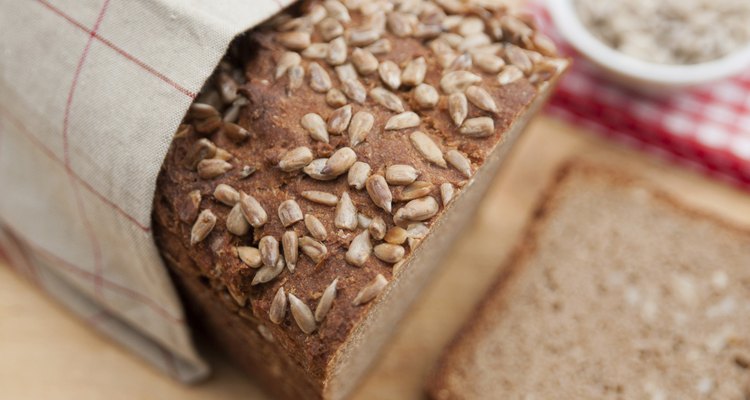
A_Lein/iStock/Getty Images
Russian rye bread and pumpernickel are dense, dark-colored breads that have a pungent flavor and are slightly sour. Although available locally at most grocery stores, Russian rye bread has its origins in Eastern Europe, Scandinavia and Russia. Pumpernickel bread has its origins in the Westphalia region of Germany. Even though rye flour is the main ingredient used in both breads, the recipes and preparation methods of the traditional Russian rye bread and pumpernickel are quite different from one another.
Russian Rye Bread

YelenaYemchuk/iStock/Getty Images
Traditionally Russians baked inexpensive and nutritious Russian rye bread from a recipe passed on for generations. The recipe for Russian rye bread just needs rye flour, sourdough, water and salt, according to Russia InfoCenter. Made over the course of five days from rye flour and water, sourdough is used as a rising agent. In contrast to traditional Russian rye bread, the Russian rye bread available in most grocery stores has yeast instead of sourdough as a rising agent and contains many more ingredients, some of which include enriched flour, rye flour, water, salt and oil.
Pumpernickel Bread
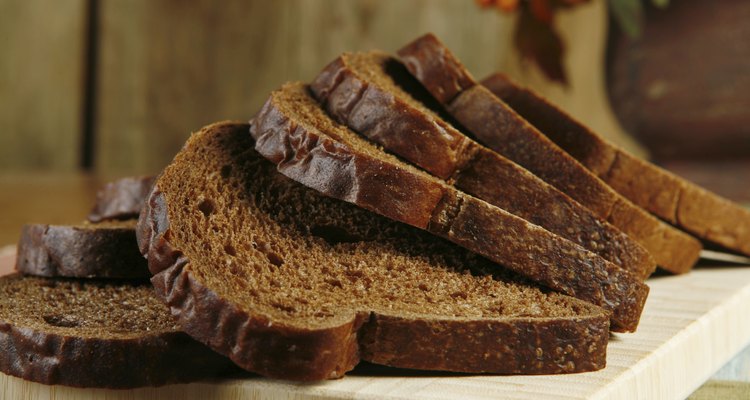
adlifemarketing/iStock/Getty Images
The original recipe for pumpernickel bread uses boiled rye meal as its main ingredient. Traditional baking of pumpernickel bread consists of two stages according to the German Food Guide: an initial baking period of two hours, followed by steaming in the oven for an additional 16 to 24 hours. The prolonged cooking time causes the rye starch to caramelize and give pumpernickel bread its rich, dark color. American pumpernickel bread differs from traditional pumpernickel bread as it contains wheat flour in addition to rye flour, and gets its dark color from molasses, coffee or cocoa powder that is added to the dough as coloring agents.
Nutritive Value of Russian Rye and Pumpernickel Breads

Paul Cowan/iStock/Getty Images
One serving or one slice of a popular brand of Russian rye bread provides 70 calories, the majority of which are contributed by carbohydrates. It also provides 4 percent of the daily value of dietary fiber and 2 percent of the daily value for calcium. On the other hand, one slice or one serving of pumpernickel bread provides 90 calories, most of which are from carbohydrates. However, a slice of pumpernickel bread provides 16 percent of the daily value for fiber, which is four times more than that provided by a slice of Russian rye bread. Additionally, pumpernickel bread provides 10 percent of the daily value for vitamins A, D, and E, and of calcium.
Benefits of Rye Breads
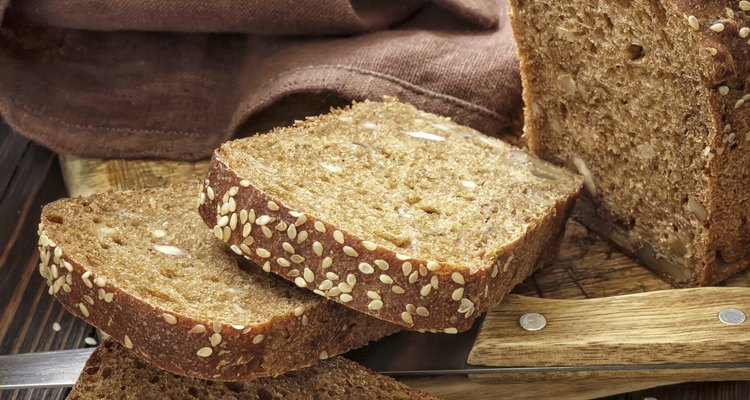
YelenaYemchuk/iStock/Getty Images
Rye as an ingredient in breads can have a positive effect on health. This is due to the presence of fiber, phenolic acids, lignans, alkylresorcinos and other bioactive compounds in rye. The high content of fiber in breads containing rye can help to maintain bowel health by preventing constipation. Furthermore, consumption of rye breads may also reduce risk of type 2 diabetes, heart disease, breast cancer, and colorectal cancer, and even help in weight loss.
Related Articles
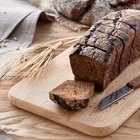
What Gives Pumpernickel Bread Its Dark ...

How to Freeze Brioche
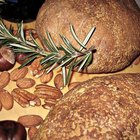
What Is Artisan Bread?

How to Make Communion Bread Wafers

Main Ingredients of English Muffins

What Are Rusk Crumbs?

What Is the Difference Between Scones & ...

How to Egg Wash a Loaf of Challah Bread

How Many Calories in Gluten-Free Bread?

How to Make Bread Chewy
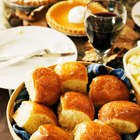
How to Make Bread Tender

What Is Unleavened Bread?

Lumpia vs. Egg Rolls

Whole Eggs Vs. Egg Yolks for Sweet Bread

What Is Indian Flat Bread Called?
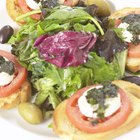
Zwieback Toast vs. Melba Toast
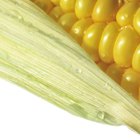
How to Substitute Light Corn Syrup in a ...
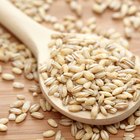
Can You Replace Bulgur With Barley?
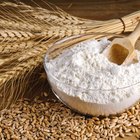
Differences Between Bleached Flour & ...

How to Make Pumpkin Bread Moist
References
Writer Bio
As a scientist and educator, Sukhsatej Batra has been writing instructional material, scientific papers and technical documents since 2001. She has a diverse scientific background, having worked in the fields of nutrition, molecular biology and biochemistry. Batra holds a PhD in foods and nutrition, and a certificate in professional technical communication.
Photo Credits
A_Lein/iStock/Getty Images